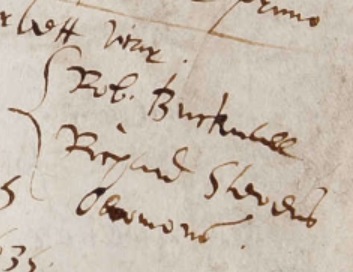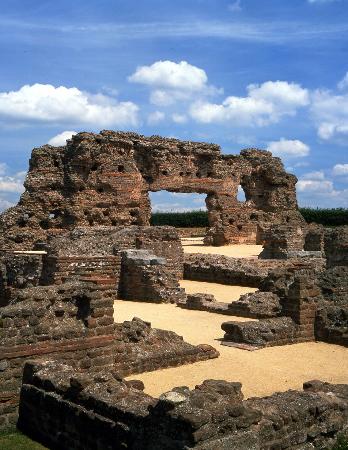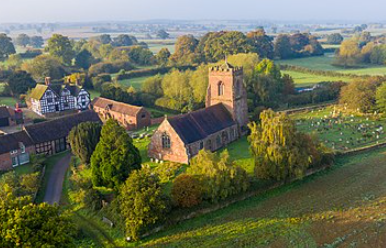
Burial record for Edward Stevens in Wroxeter:
"Edwardus Stevens de Donington mortus 28 die Novembris et sepultus 29 anno 1654"
Edward Stevens of Wroxeter was born in about 1620 of Wroxeter,
most likely the son of Richard Stevens and Elizabethe Lewis.
Edward married Margaret.
Edward died and was buried 29 November 1654 in Wroxeter, and was
shown as being "of Donington".

Margaret died and was buried 22 September 1678 in Wroxeter, and
was shown as being a widow at the time of her death.

Edward and Margaret had the following children:
1. Richard, christened 5 July 1646 in Wroxeter,
Shropshire, England.
2. Richard, christened 2 January 1648 in Wroxeter; buried
3 October 1681 in Wroxeter.
3. Mary, christened 21 October 1649 in Wroxeter; buried
21 September 1681 in Wroxeter.
4. *Anne, christened 11 November 1651 in Wroxeter;
married Edward Hinley 4 April 1670 in St. Julian, Shrewsbury,
Shropshire.

Baptism record for Anne Stevens in Wroxeter: "Anna Stevens
filia Edward Stevens et Margarete uxoris eius baptisa fuit 11
Noveb 1651"
SOURCE: IGI; www.newfamilysearch.org; Wroxeter parish register.
FAMILY GROUP RECORD OF
RICHARD STEVENS AND
ELIZABETHE LEWIS
Richard Stevens was christened 28 March 1572 in Berrington,
Shropshsire, the son of William Stevens. Berrington is a parish
about two miles southwest of Wroxeter.

Richard married Elizabethe Lewis 5 July 1597 in Frodesley,
Shropshire, a parish about eight miles from Wroxeter.

Richard was listed as a churchwarden in the Wroxeter parish
register in 1634.

Richard was buried in Wroxeter on 26 August 1650, and shown as
being "of Donington". Donnington is a hamlet in the parish
of Wroxeter.

Richard had the following child:
1. *Edward, born in about 1620; married Margaret; buried
29 November 1654 in Wroxeter "of Donington".
No other children have been identified for Richard, but several
other Stevens are found in the Wroxeter parish register.
Wroxeter is a village on the River Severn in Shropshire. It is at
the site of the Roman city of Viroconium Cornoviorum, which was
the fourth largest city in Roman Britain. Standing Roman ruins are
found just outside the village. The church is St. Andrew's, and
was built partially from re-used Roman stone. The font in the
church was made from the hollowed-out base of a Roman column.
Wroxeter was abandoned as a Roman city in the sixth or seventh
century, and a small village grew around a ford at the southern
end of the city. The Roman stone was used as building materials in
the local area.


